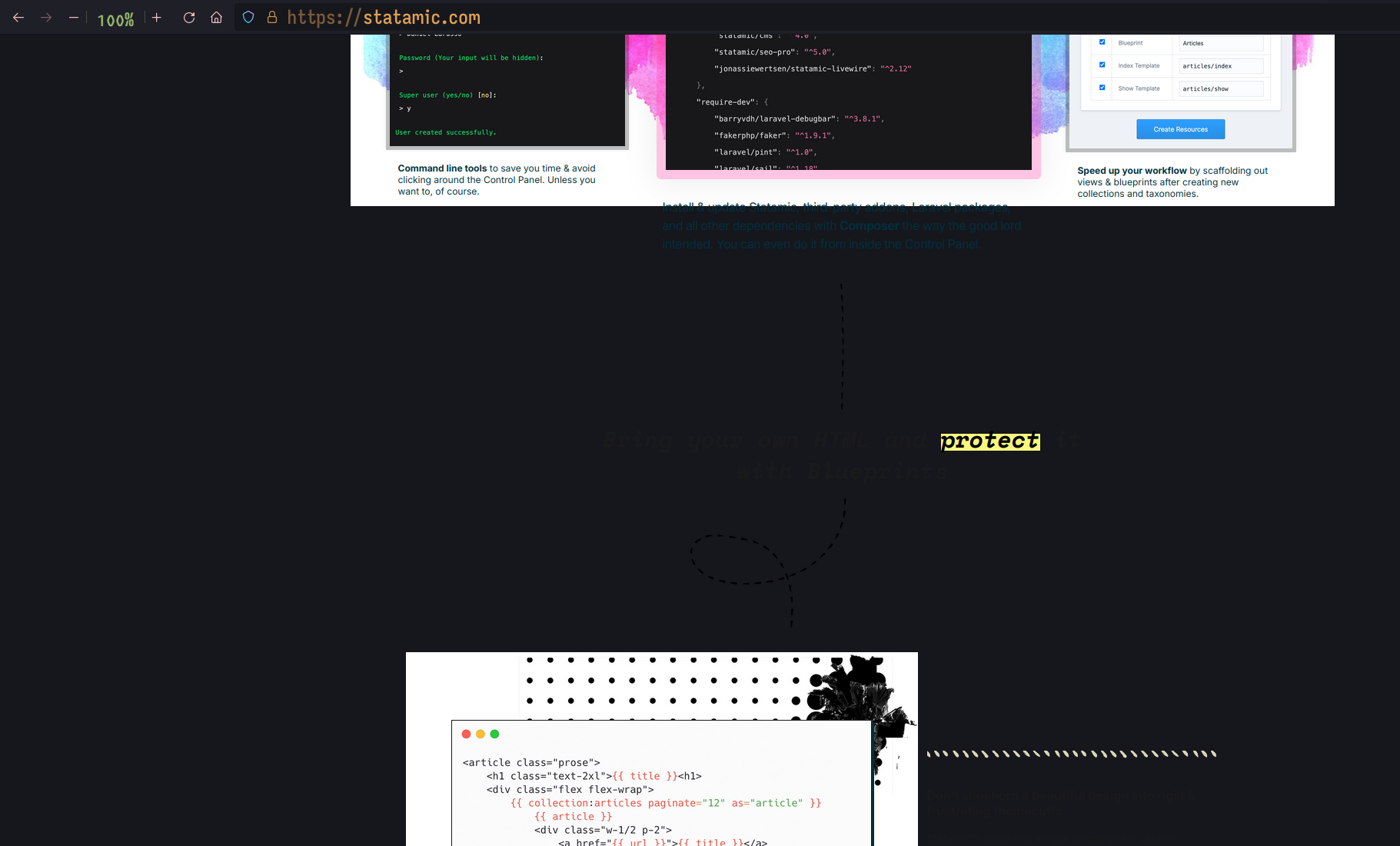FWIW Statamic (like many sites) fails my basic "is everything on the main site legible for dark-mode preferring users?" test:

FWIW Statamic (like many sites) fails my basic "is everything on the main site legible for dark-mode preferring users?" test:

When you try to activate the Cube effect with fewer than 3 virtual desktops, it will now tell you why it’s not working
Aw man. I used to use a 2 sided "cube" with compiz, just flipped the desktop around to the back side.
Yeah, since broot is a full featured file navigator and operator, you can get anywhere once it's launched. I have alt+up bound to go up a directory, but there are other ways to get around as well.
Broot supports fish out of the box, and you can use its default fish launcher function to change your folder (alt+enter quits broot then performs a cd) or insert a path (the broot command pp quits broot then prints the path, like fzf).
I never learned fish scripting, but if anyone here has they may try to port my Zsh functions, especially to get path completion for partially typed paths. If you're doing that and have questions about the broot config side of the equation, I'm happy to try to help.
FWIW broot is a great fuzzy finding file tree tool that can be used similarly (much better for the task IMO), with a little configuration.
Zsh is not extended Bash, but an extended Bourne shell. This article isn't relevant to Bash.
That's not bash...
That looks cool, thanks!
Can the drag and drop designer work with QML yet?
~~How dare you?~~
Thanks!
I love Arch but you may also be interested to try Siduction for similar benefits with less change from what you know (it's still Debian).